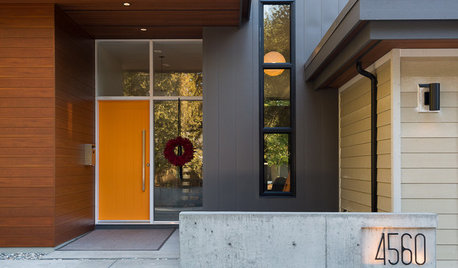Help! How to make a low maintenance yard without going into debt?
magnoliasouth
10 years ago
Related Stories

CURB APPEALEntry Recipe: Low-Maintenance Meets Contemporary Curb Appeal in Canada
A neighborhood-appropriate mix of textures and colors invites visitors to linger as they approach
Full Story
GARDENING AND LANDSCAPINGHow to Make a Pond
You can make an outdoor fish paradise of your own, for less than you might think. But you'll need this expert design wisdom
Full Story
KITCHEN COUNTERTOPSKitchen Counters: High-Tech Solid Surfaces Make Maintenance Easy
Sculpted by heat and nonporous by nature, solid-surface countertops bring imagination and low maintenance to the kitchen
Full Story
LANDSCAPE DESIGN7 Low-Maintenance Lawn Alternatives
Turf isn't the only ground cover in town. Get a lush no-grass lawn with clover, moss and other easy-care plants
Full Story
LIFEHow to Make Your House a Haven Without Changing a Thing
Hung up on 'perfect' aesthetics? You may be missing out on what gives a home real meaning
Full Story
SELLING YOUR HOUSE10 Low-Cost Tweaks to Help Your Home Sell
Put these inexpensive but invaluable fixes on your to-do list before you put your home on the market
Full Story
KITCHEN CABINETS9 Ways to Get Low-Maintenance Kitchen Cabinets
Save valuable elbow grease and time with these ideas for easy-to-maintain cabinets
Full Story
GARDENING AND LANDSCAPINGRaise Backyard Chickens Without Ruffling Neighbors' Feathers
Before you build a coop in the backyard, follow these strategies to help keep your neighbors from squawking
Full Story
KITCHEN COUNTERTOPS7 Low-Maintenance Countertops for Your Dream Kitchen
Fingerprints, stains, resealing requirements ... who needs ’em? These countertop materials look great with little effort
Full Story
GARDENING GUIDESGreat Design Plant: Rosa Banksiae a Low-Maintenance Beauty
This thornless, disease- and insect-resistant rose brings showers of white or yellow flowers to the spring garden
Full StorySponsored






farmerkevin
sylviatexas1
Related Professionals
Foothill Ranch Landscape Architects & Landscape Designers · Hyattsville Landscape Architects & Landscape Designers · Mountain Brook Landscape Architects & Landscape Designers · Aurora Landscape Contractors · Bridgeport Landscape Contractors · Norristown Landscape Contractors · Oak Forest Landscape Contractors · Paso Robles Landscape Contractors · Petaluma Landscape Contractors · Tustin Landscape Contractors · West Coon Rapids Landscape Contractors · Winter Gardens Landscape Contractors · Billings Siding & Exteriors · Layton Siding & Exteriors · Scotch Plains Siding & ExteriorsTiffany, purpleinopp Z8b Opp, AL
gardenper
Adella Bedella
mzdee
Tiffany, purpleinopp Z8b Opp, AL
prairiemoon2 z6b MA